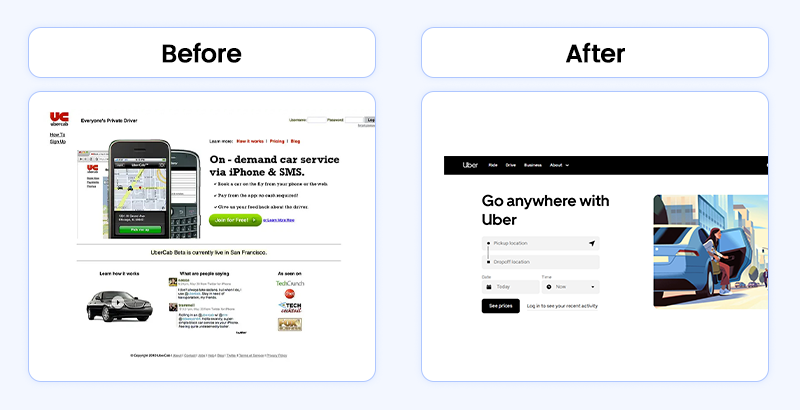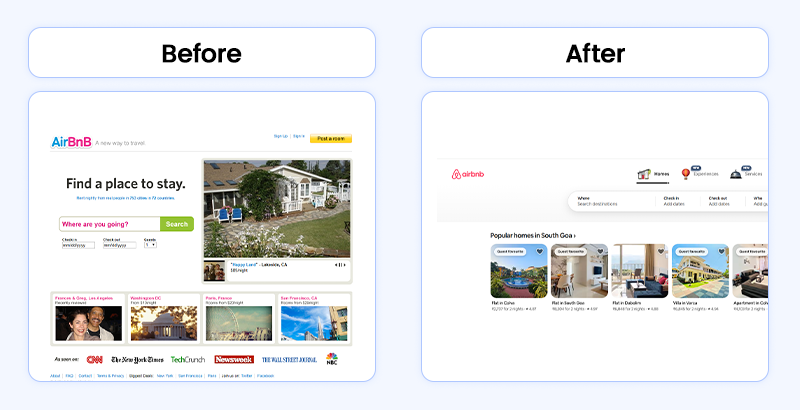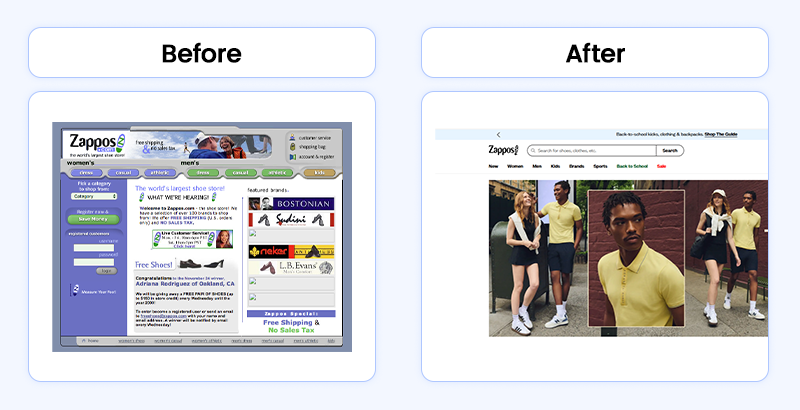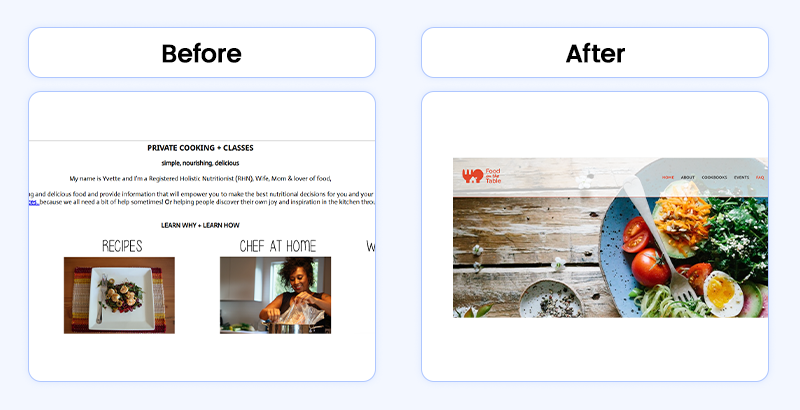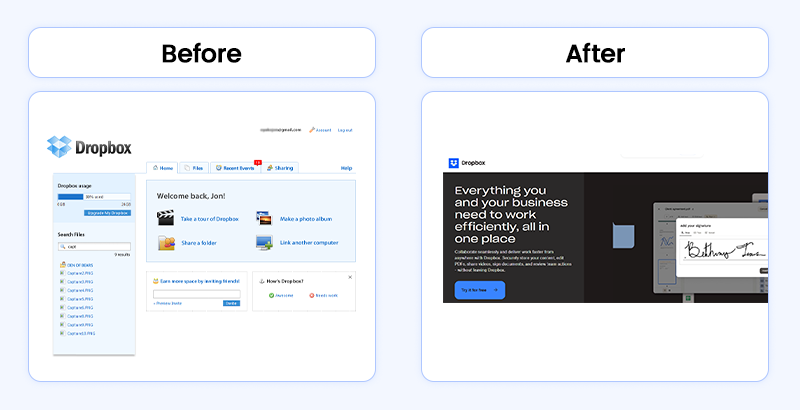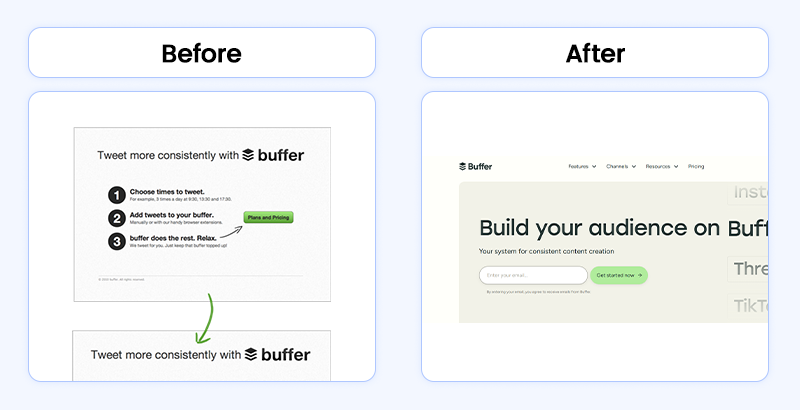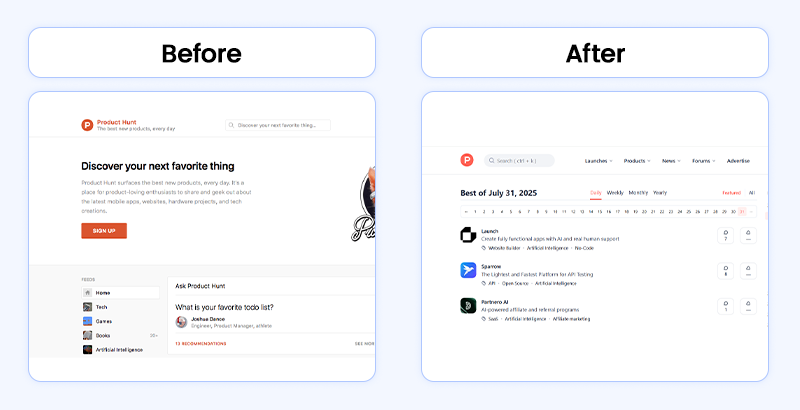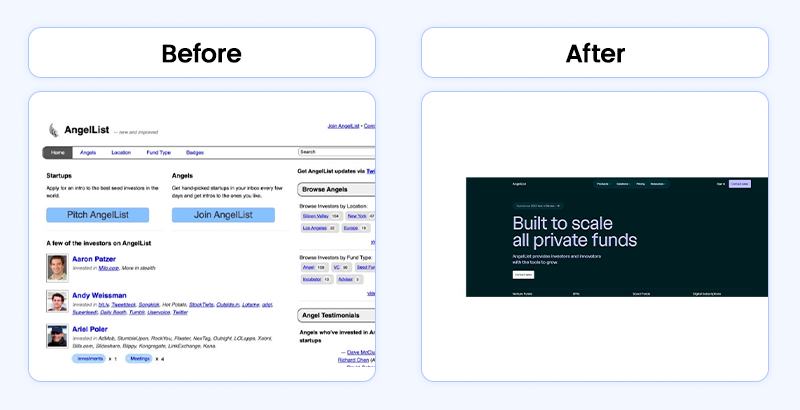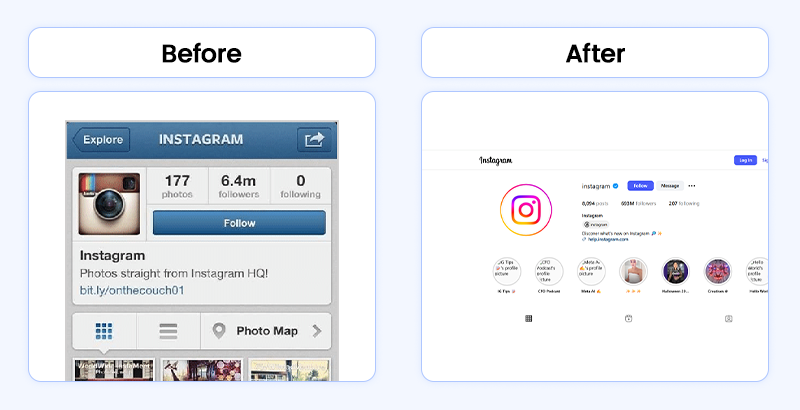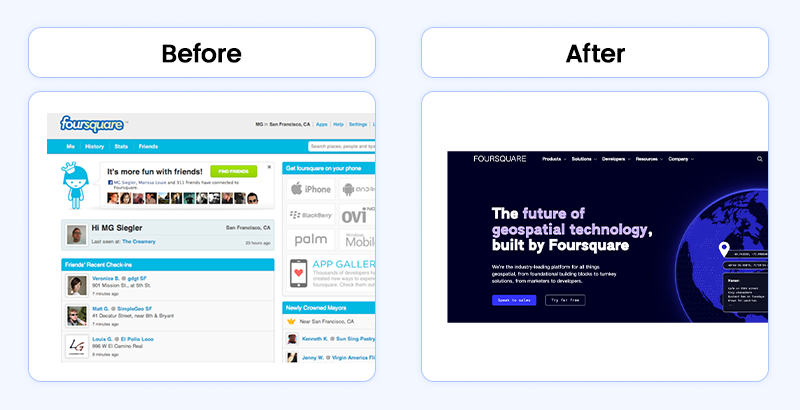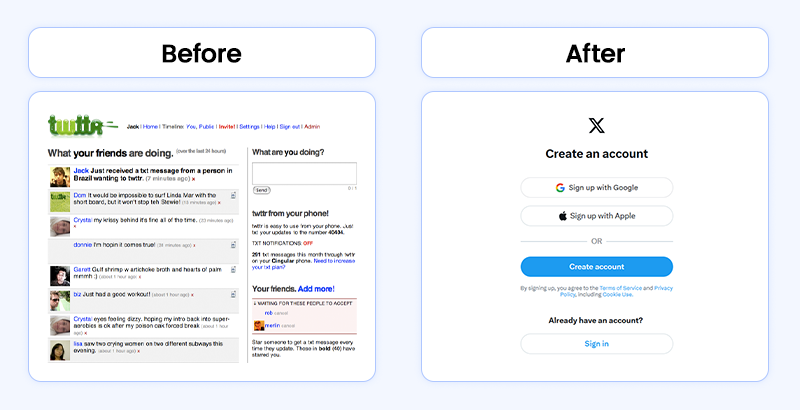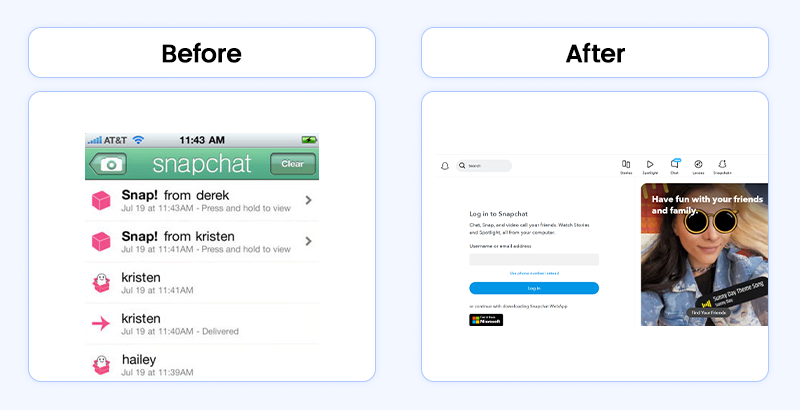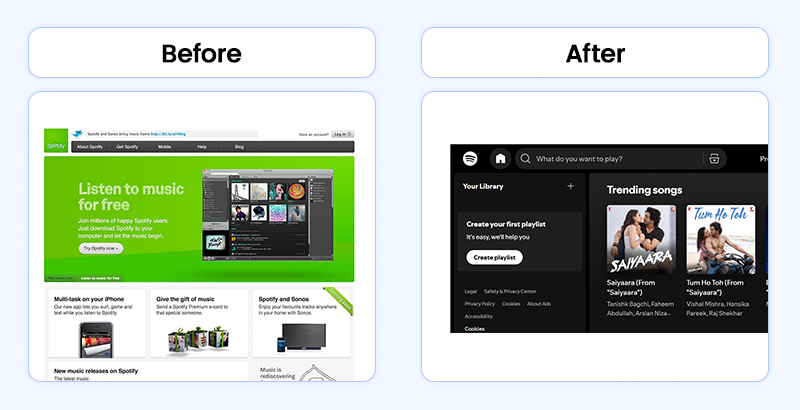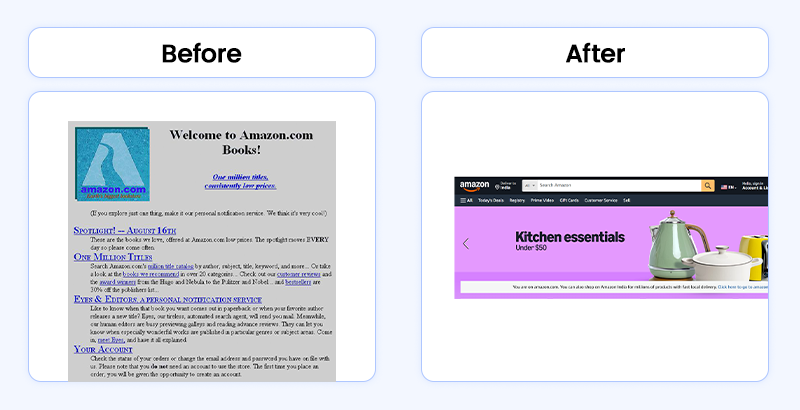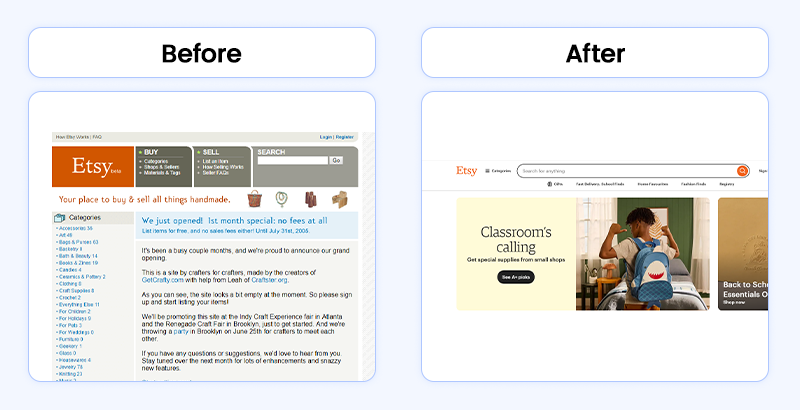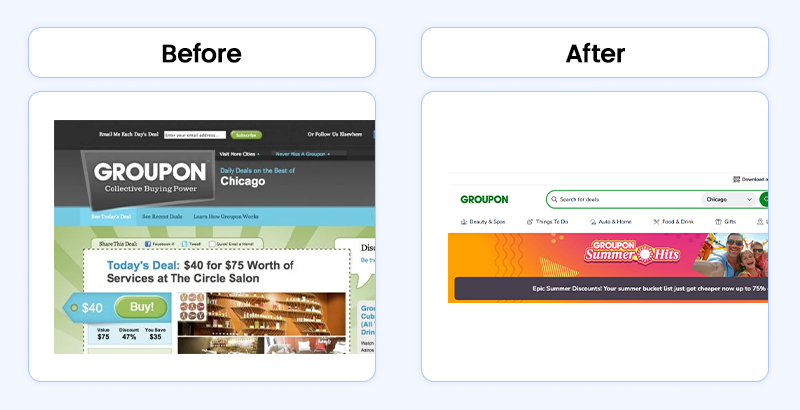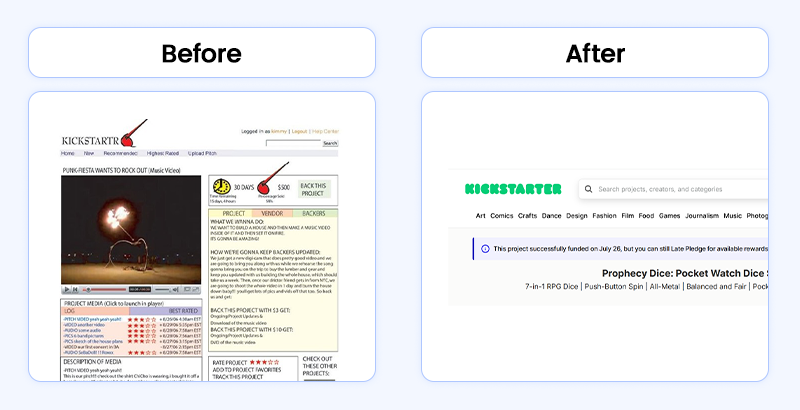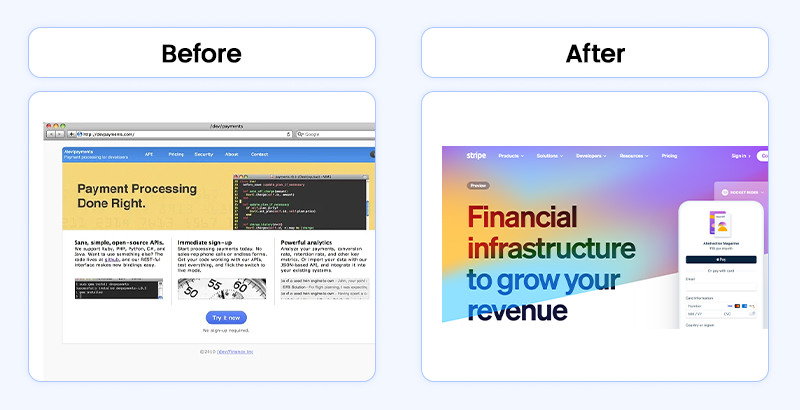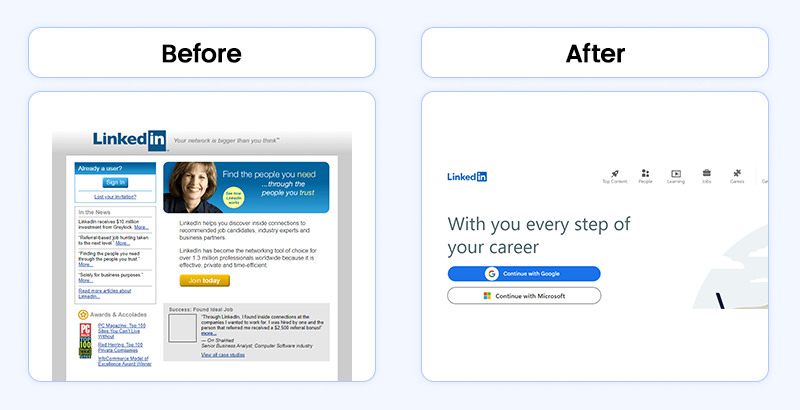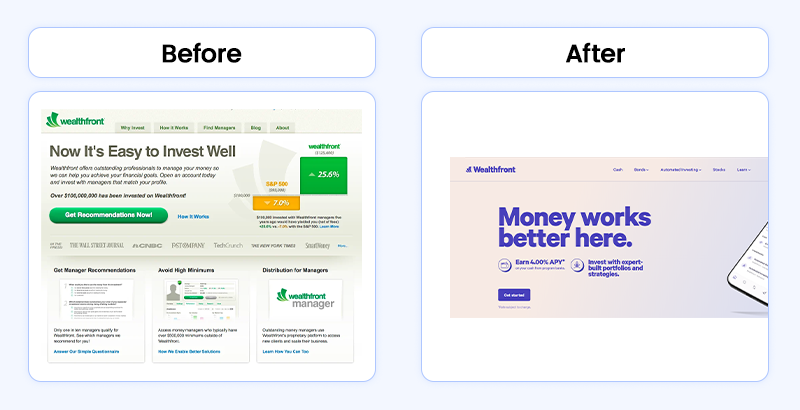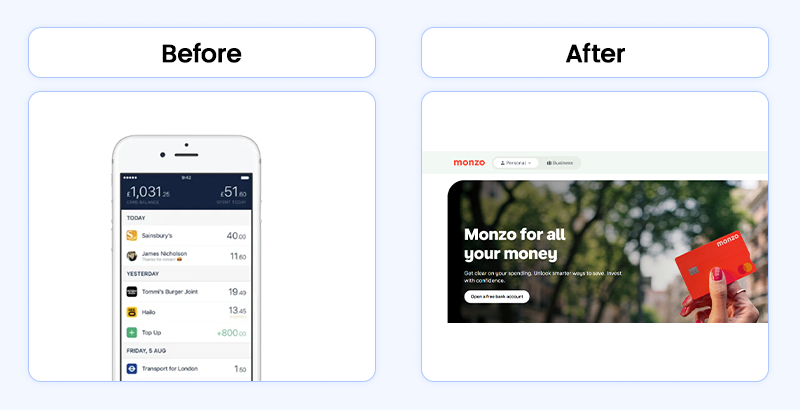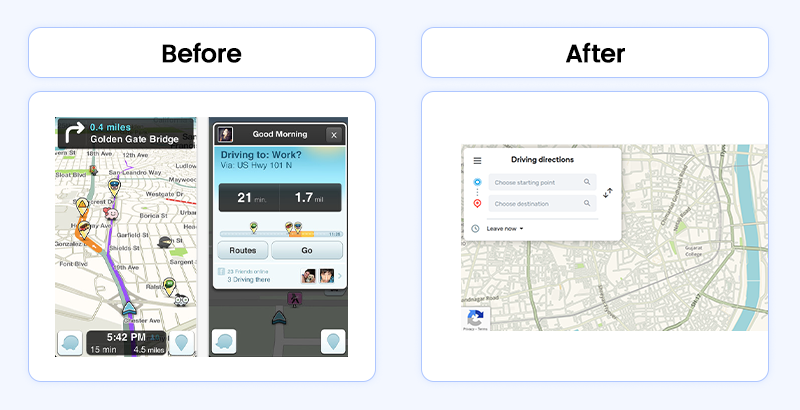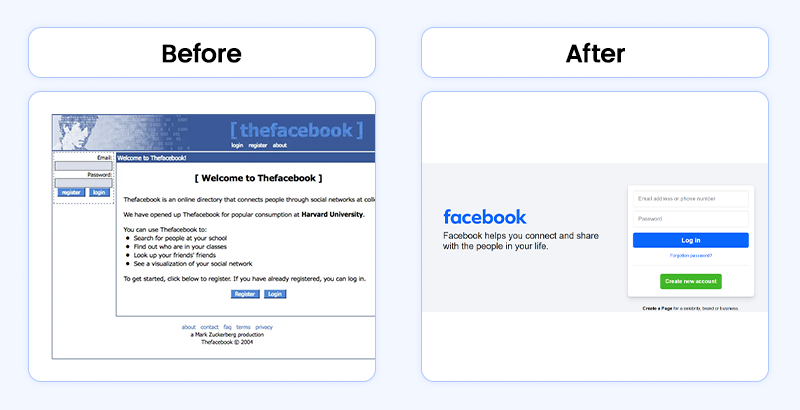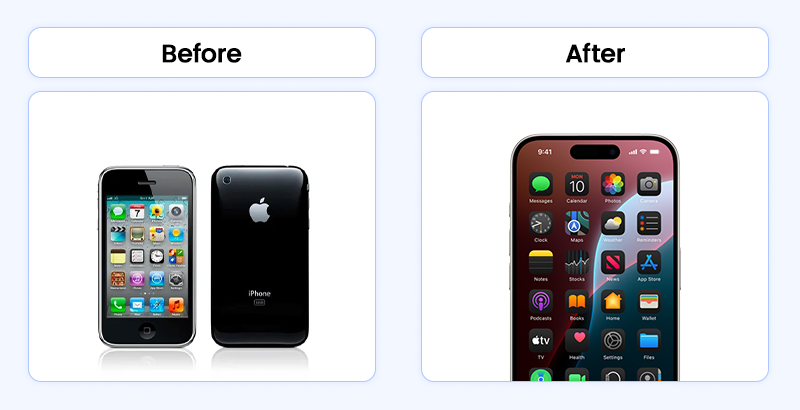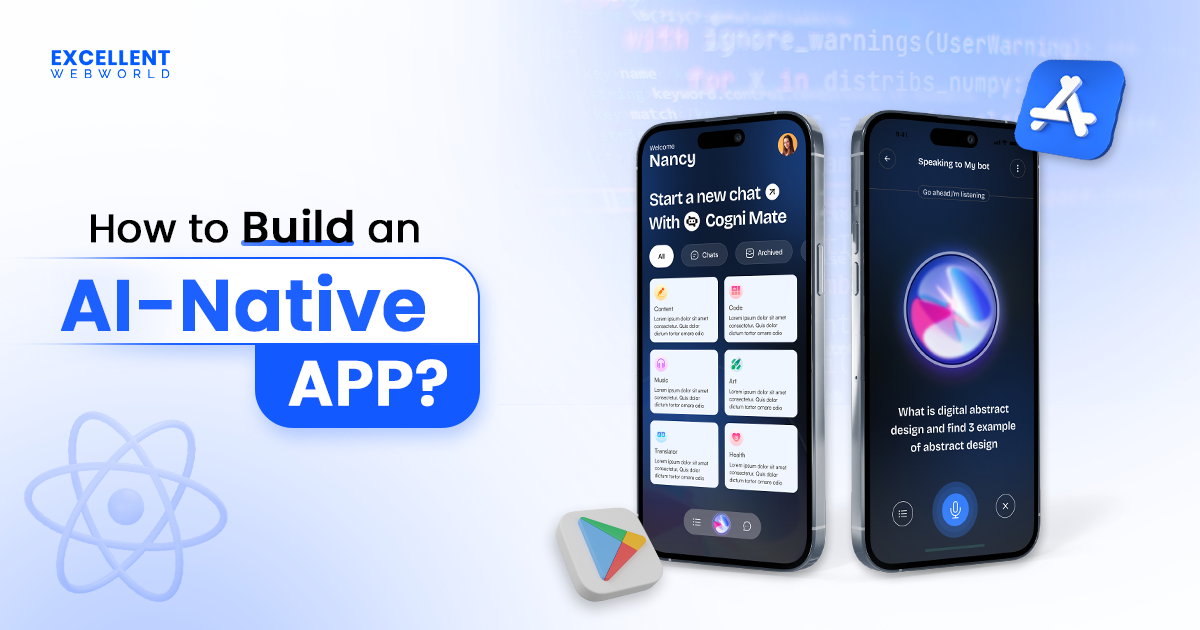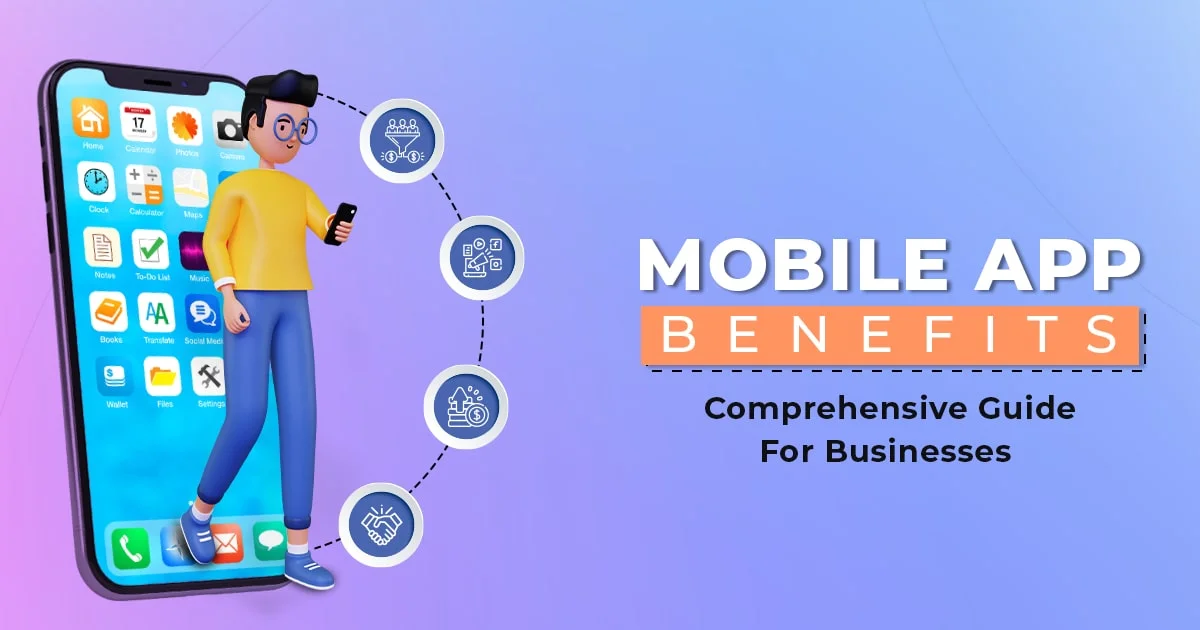You have a brilliant startup idea, but one question keeps eating at you: “What if I build something nobody wants?”
Every successful company started exactly where you are now. They had an idea, limited resources, and zero guarantees. The difference? They crafted an exceptional MVP that proved their idea without burning through their budget.
Your MVP doesn’t need to be perfect. It just needs to solve a real problem. The founders in this guide started with simple versions. Some used basic websites. Others built apps with three features.
These examples of MVP will show you exactly what “minimum viable” looks like across different industries. You’ll see what those minimum viable product examples covered, what they ignored, and the way they used AI tools and cloud platforms to build quicker.
Stop second-guessing yourself. These verified approaches will assist you in building an MVP that draws users, angel investors, and venture capitalists.
Top 24 (MVP) Minimum Viable Product Examples
These real-world 24 most inspiring Minimum Viable Product examples prove that you don’t need perfect products to start winning customers and investors.
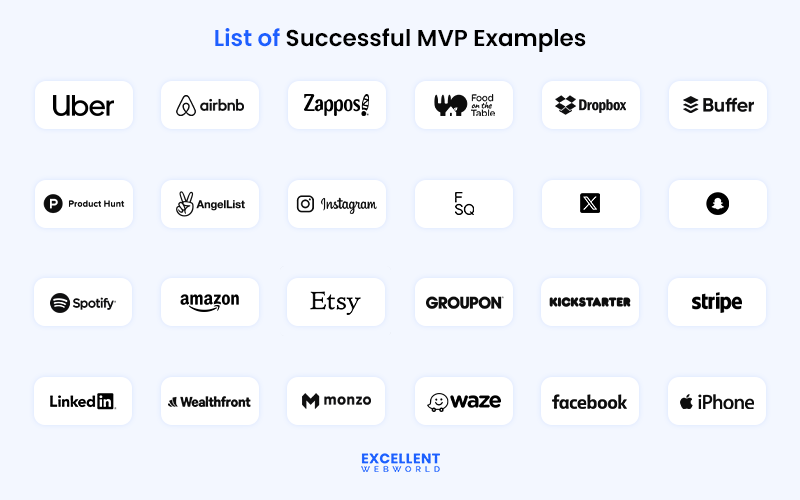
For understanding these MVP examples in a better manner, we have divided these MVPs into six major categories based on how they were built or which problem they approached:
Let’s analyze them one by one in detail.
Examples of MVPs Addressing Real-world Physical Problems
Four game-changing startups that cracked physical world problems using minimum viable product strategies instead of complex solutions.
| Company | MVP Type | Delivery Method | Outcome |
|---|---|---|---|
| Uber | Simple app connecting riders to drivers | Manual dispatch via iPhone app | $180B+ valuation |
| Airbnb | Basic website listing spare rooms | Hand-built site with photos | 275M+ users globally |
| Zappos | Online shoe catalog without inventory | Drop-shipping from local stores | $1.2B Amazon acquisition |
| Food on the Table | Personalized meal planning service | Manual curation and phone calls | Successful exit to Scripps |
1. Uber (2009)
Travis Kalanick and Garrett Camp started Uber with a simple iPhone app in San Francisco. They solved the problem of high-priced taxi rides and unreliable service.
Their MVP testing, an early stage of taxi dispatch app development, involved manually connecting drivers to riders through a basic taxi dispatch app. No fancy algorithms or surge pricing yet.
The founders coordinated everything by hand. This basic system proved that people desperately wanted on-demand transportation, especially those who do white-collar jobs.
Uber pivoted from luxury black cars to everyday rides in response to observed demand patterns. This shift unlocked massive market potential.
Within their first year, they hit 1 million rides. Cities started calling them for expansion. Investors lined up with funding that built today’s ride-sharing app giant.
If you’re ready to capitalize on the booming ride-sharing industry, now is the ideal time to develop an on-demand taxi booking app with advanced GPS tracking, secure payment integration, and intuitive user interfaces.
2. Airbnb (2008)
Brian Chesky and Joe Gebbia tackled expensive hotel stays during conferences. They started Airbnb by renting air mattresses in their apartment.
Their minimum viable product examples were a basic website with photos and booking forms—no payment processing or professional features.
Email handled all coordination manually. It proved that travelers would choose affordable, personal options over expensive hotels.
The pivot came when they expanded beyond air mattresses to entire homes and apartments worldwide.
Within months, they were drowning in bookings. Today, they host 275 million users across 191 countries, proving that home-sharing could replace traditional hotels.
With home-sharing demand at an all-time high, there’s never been a better opportunity to build a travel app like Airbnb that delivers seamless user experiences and community-driven travel solutions.
3. Zappos (1999)
Nick Swinmurn desired to shop for shoes online but discovered limited options. He created Zappos with a simple website without owning any stock.
Those Minimum Viable Product examples involved photographing shoes at local stores, then buying and shipping them when customers ordered online.
This drop-shipping approach validated that people would buy shoes without trying them on first.
No major pivots needed – the concept worked immediately. The focus shifted to customer service and company culture instead.
Customer orders flooded in immediately. The easy idea worked so well that Amazon subsequently acquired Zappos for $1.2 billion, validating online shoe retail forever.
Ready to launch your online store? Get clarity on e-commerce mobile app development cost before starting your project. Create powerful shopping apps with advanced features, smooth navigation, and reliable performance.
4. Food on the Table (2008)
Manuel Gonzalez and Olivier Thierry launched Food on the Table, targeting busy families needing efficient grocery shopping solutions.
Their examples of a minimum viable product started with manual meal planning via phone calls and email consultations.
They created personalized meal plans and purchasing lists for individual families based on their specific choices.
They pivoted from a personal service provider to an automated platform while technology caught up with their vision.
Families loved the personal touch. Word spread quickly through neighborhoods. Eventually, Scripps Networks acquired them, proving personalized food solutions could scale successfully beyond manual operations.
Examples of Minimum Viable Products built with Videos, Pages, or Emails
You do not always need to code your first MVP (minimal viable product). Innovative founders verify their thoughts with video, landing pages, or emails first.
| Company | MVP Type | Delivery Method | Outcome |
|---|---|---|---|
| Dropbox | Demo Video | Simple webpage with video | 75,000 signups overnight |
| Buffer | Landing Page | Single-feature scheduling tool | 100,000 users in 9 months |
| Product Hunt | Email List | Daily curated email newsletter | Built community before product |
| AngelList | Simple Website | Basic startup-investor matching | Became $4B platform |
5. Dropbox (2007)
Drew Houston started Dropbox in 2007 because he kept forgetting his USB drive.
Instead of building complex software first, he created a simple demo video showing files syncing across devices.
The MVP website examples showed just the core concept – no actual product existed yet.
This approach solved a considerable problem: proving people wanted cloud storage before spending months coding.
The video went viral on Digg and generated 75,000 signups in one night.
This validation helped Houston secure funding and build the right features users needed.
Looking to launch the next big SaaS product? Now is the time to invest in cloud application development services that ensure scalability, high availability, and seamless integration from day one.
6. Buffer (2010)
Joel Gascoigne founded Buffer in 2010 when social media scheduling was painful and steeply priced.
His first version was only a landing web page with buttons for pricing plans and a simple scheduling form.
No fancy dashboard, no analytics – just the core scheduling feature that solved one specific pain point.
This example of a minimum viable product approach helped him validate demand without heavy development costs.
Within 9 months, Buffer had 100,000 users who loved the simplicity.
If you’re inspired by Buffer’s lean start, work with a social media app development company to craft powerful examples of minimum viable product that solve real pain points, whether it’s scheduling, sharing, or community building.
7. Product Hunt (2013)
Ryan Hoover launched Product Hunt in 2013 as a simple email newsletter, not a website.
He manually curated interesting new products and sent them to a small list of startup enthusiasts.
This example of MVP tested whether people wanted daily product discovery without building complex voting systems.
The email format created genuine engagement and built a tight community first.
Once he proved the concept worked, he expanded into the whole platform we know today.
8. AngelList (2010)
Naval Ravikant created AngelList in 2010 to fix startup fundraising chaos.
The first version was just a basic website where startups could list themselves and investors could browse.
No complex matching algorithms or fancy features – just simple profiles and contact information.
This stripped-down approach proved that both sides desperately wanted a central meeting place.
The cost to build an MVP was minimal, but the impact was massive – it became a $4B company.
MVP Examples That Focused on One Clear Feature
These startup Minimum Viable Product examples prove that specializing in one core characteristic can result in billion-dollar organizations.
| Company | MVP Type | Delivery Method | Outcome |
|---|---|---|---|
| Photo-sharing app | iOS app store | 100K users in the first week | |
| Foursquare | Location check-in | Mobile app | 1M users in the first year |
| X (Twitter) | Status updates | Web platform | Explosive growth during SXSW |
| Snapchat | Disappearing photos | iOS app | 1M daily snaps by December 2012 |
| Spotify | Music streaming | Desktop app | 1M users in 5 months |
9. Instagram (2010)
Kevin Systrom and Mike Krieger released Instagram in 2010. They solved a simple problem: making phone snapshots appear professional.
Their MVP product example focused on just photo filters and sharing: no stories, no reels, no shopping features.
They found product-market fit by watching users share millions of photos daily. The app felt magical because it made everyone a photographer.
The biggest pivot? They began as Burbn, a check-in app like Foursquare. But users only used the photo feature.
Result: Facebook acquired them for $1 billion within two years.
The social media landscape offers incredible opportunities for entrepreneurs. Discover step-by-step strategies to build a social media app like Instagram featuring intuitive design, robust functionality, and scalable architecture for success.
10. Foursquare (2009)
Dennis Crowley and Naveen Selvadurai started Foursquare in 2009. They turned boring location sharing into a game.
Their MVP in business was simple: check in at places and earn badges: no complex features or social feeds.
They discovered product-market fit when users started competing for “mayor” status at their favorite spots. People loved the gamification.
The product grew to 10 million users within two years and became the benchmark for location-based marketing.
11. X (Previosuly Twitter) (2006)
Jack Dorsey, Biz Stone, and Evan Williams created Twitter (Now x.com) in 2006. They solved communication overload with micro-messaging.
Their MVP focused on one query: “What are you doing?” Limited to 140 characters through SMS.
Product-market fit came during SXSW 2007 when usage tripled. People realized they could follow breaking news instantly.
The platform evolved from personal status updates to a global conversation hub with over 650 million users.
With the rise of platforms like Twitter – the best social media app– it’s the ideal moment to develop apps built for instant communication, trending topics, and high-volume user interactions.
12. Snapchat (2011)
Evan Spiegel, Bobby Murphy, and Reggie Brown launched Snapchat in 2011. They solved photo privacy concerns with disappearing messages.
Their MVP ideas centered on temporary photo sharing. No filters, stories, or discover features initially.
They found fit among teenagers who wanted privacy from parents and permanent digital records. They added the Stories feature in 2013, which became hugely popular and was copied by competitors.
Impact: Reached 450 million daily users and went public for $24 billion.
With a massive user base and viral features, Snapchat proved its product-market fit. But what fuels its business engine? Let’s explore how Snapchat makes money in today’s competitive social media landscape.
13. Spotify (2006)
Daniel Ek and Martin Lorentzon started Spotify in 2006. They tackled music piracy with legal, instant streaming.
Their MVP delivered unlimited music streaming with a simple play button. No podcasts, playlists, or social features yet.
Product-market fit was realized when customers got to know that they could get access to any song immediately without downloading. The convenience won over music lovers.
They pivoted from desktop-only to mobile-first as smartphones became dominant. Innovative MVP development services focus on this type of strategic timing.
Success metric: 276 million premium subscribers and disrupted the entire music industry.
Thinking of developing a music streaming app like Spotify? Start simple: unlimited music, clean UI, and fast playback. MVPs that deliver core value first are more likely to gain traction in a crowded music tech space.
Minimum Viable Product Examples of Marketplaces or Commerce
These marketplace MVPs prove you don’t need complicated features to validate demand and attract early customers.
| Company | MVP Type | Delivery Method | Outcome |
|---|---|---|---|
| Amazon | Online bookstore | Manual order processing via email/phone | $15.7M revenue in first 2 years |
| Etsy | Handmade goods platform | Basic seller listings with a forum-style community | 10,000+ sellers by mid-2006 |
| Groupon | Daily deal aggregator | WordPress blog with manual deal posts | $14M revenue in the first year |
| Kickstarter | Crowdfunding platform | Simple project submission and backing system | $27M pledged in the first year |
14. Amazon (1994)
Jeff Bezos began Amazon as an easy online bookshop in his garage. He recognized the core problem: people wanted easy access to books without traveling to physical shops.
His MVP in startups approach was brilliant. Instead of building complex inventory systems, he manually processed orders and sourced books from distributors.
The early Amazon website looked basic. Customers could browse book titles and place orders via email or phone calls.
Bezos found a product-market match by focusing on book lovers who valued convenience and choice over instantaneous gratification.
The types of minimum viable products Amazon used proved that starting small works better than launching everything at once.
Amazon’s journey proves that simplicity, speed, and solving real user problems matter more than perfection. If you’re starting or scaling your online store, expert eCommerce consulting services can help you do the same.
15. Etsy (2005)
Rob Kalin, Chris Maguire, and Haim Schoppik released Etsy to solve an easy problem: crafters wanted an easier way to promote handmade objects online.
Their MVP turned into a primary market in which sellers could list gadgets with pictures and descriptions. The platform felt more like a community discussion board than a sophisticated e-trade website.
They discovered a product-market match by specializing in particular, hand-crafted objects that huge stores could not offer. The personal connection between customers and makers became their differentiator.
Etsy attracted 10,000 sellers within its first year, proving that niche markets can drive rapid growth.
16. Groupon (2008)
Andrew Mason created Groupon to solve group buying challenges. His idea: businesses needed customers, and customers wanted better deals.
The PoC vs Prototype vs MVP concept became clear through Groupon’s approach. They started with “The Point,” a platform for group actions.
Mason pivoted to daily deals when he noticed deal-related activities generated the most engagement. This pivot transformed everything.
Their MVP was essentially a WordPress blog posting one deal per day. No complex payment systems or automated features initially.
They manually negotiated with local businesses and posted deals. Customer payments were processed through basic systems.
The simplicity worked perfectly. Groupon reached $14 million in revenue during its first year of operation.
Behind the daily deal magic is a simple engine. If you’ve wondered how Groupon works it’s all about batching consumer demand to unlock discounts that wouldn’t exist individually.
17. Kickstarter (2009)
Perry Chen, Yancey Strickler, and Charles Adler wanted to democratize project funding. They saw creative people struggling to finance their ideas.
Their MVP project “Kickstarter” allowed creators to post project descriptions and funding goals. Backers could pledge money toward projects they liked.
The early version had basic features: project pages, pledge buttons, and simple payment processing: no complex algorithms or recommendation engines.
They found product-market fit by focusing on creative projects that traditional funding sources ignored. Artists, filmmakers, and inventors became their core users.
Kickstarter facilitated $27M pledges in the first year, proving their concept worked.
MVP Examples From B2B or Platform Startups
These four companies prove you don’t need complex features to start building your business MVP.
| Company | MVP Type | Delivery Method | Outcome |
|---|---|---|---|
| Stripe | Simple payment API | Developer documentation + basic integration | $95B valuation, 1.31M Live Websites Using It |
| Professional networking site | Web platform with basic profiles | 1.15B+ users, $26B acquisition | |
| Wealthfront | Automated investment tool | Web-based robo-advisor | $80B assets under management |
| Monzo | Mobile-first banking | Prepaid card + basic app | 10M+ customers, full banking license |
18. Stripe (2010)
John and Patrick Collison started Stripe in 2010 because online payments were broken.
Every developer was struggling with payment gateway integration. It took weeks of coding just to accept a simple credit card payment.
Their MVP in the startup phase was brilliant in its simplicity. They built seven lines of code that any developer could copy-paste to start accepting payments.
No fancy dashboard. No complex features. Just clean code that worked instantly.
Developers loved it because it solved their biggest headache in minutes, not weeks. Word spread fast in the developer community.
Stripe never pivoted. They just kept making payments easier for developers and businesses worldwide.
19. LinkedIn (2003)
Reid Hoffman released LinkedIn in 2003, when networking meant exchanging business cards at meetings.
Professional networking online didn’t exist. People had no way to maintain work relationships digitally.
LinkedIn’s MVP of a product was a basic website where you could create a professional profile and connect with colleagues.
No news feed. No company pages. No messaging system. Just simple profiles and connection requests.
They found their sweet spot by focusing on professionals who wanted to maintain work relationships online.
The platform never made major pivots. They gradually added features like job postings and company updates.
LinkedIn showed that you don’t need a flashy idea to make a social media app – just a real-world problem and a simple solution. Start with profiles and purpose, and grow from there.
20. Wealthfront (2008)
Andy Rachleff and Dan Carroll founded Wealthfront in 2008 during the financial crisis.
Young professionals wanted to invest but couldn’t afford expensive financial advisors or meet high minimum requirements.
Their MVP was a web-based robo-advisor that automatically invested your money using algorithms instead of human advisors.
They initially focused on tech workers in Silicon Valley who understood automation and trusted technology with their money.
Wealthfront never pivoted from automated investing. They just expanded to more investment options and financial services.
Their easy approach made making an investment accessible to millions who were formerly shut out.
If you’re planning to start a fintech company, look at Wealthfront’s playbook. They didn’t complicate things – just used tech to make investing accessible when most people needed financial help, not jargon.
21. Monzo (2015)
Tom Blomfield started Monzo in 2015 because traditional banks were stuck in the past.
Banking apps were terrible. Getting real-time notifications or spending insights was impossible with legacy banks.
Monzo’s MVP was a bright orange prepaid card connected to a mobile app that showed instant spending notifications.
No loans. No overdrafts. No complex banking products. Just a card and an app that made spending visible.
They found a product-market fit with young urban experts who desired transparency and control over their money.
The only pivot was upgrading from pay-as-you-go playing cards to complete banking licenses as they grew.
Monzo’s mobile-first approach revolutionized how humans think about everyday banking.
Inspired by Monzo’s success, neobank app development now focuses on transparency, speed, and mobile-first design. No paperwork. No waiting. Just seamless money management in your pocket, built for the digital generation.
Conceptual or Crowd-Based MVPs
These smart founders tested ideas before building anything complex or expensive.
| Company | MVP Type | Delivery Method | Outcome |
|---|---|---|---|
| Waze | Community-driven app | Simple traffic reporting | $1.1B Google acquisition, 140M+ users |
| Basic social network | College-only platform | 3B+ users, $1.7T+ market cap | |
| iPhone | Prototype demonstration | Keynote presentation | 2.2B+ devices sold, $3T+ company |
22. Waze (2008)
Ehud Shabtai started Waze in 2008 when he got tired of sitting in traffic jams.
His core problem was simple. Drivers had no way to share real-time traffic updates.
Instead of building a complex navigation system, Shabtai created a basic app. Users could report accidents, police, and traffic jams on a simple map.
The agile MVP example worked because people loved helping other drivers. They felt like part of a community fighting traffic together.
Waze found product-market fit when users started opening the app daily. They weren’t just using it – they were contributing to it.
Google saw the value and bought Waze for $1.1 billion in 2013. Today, over 140 million people use Waze monthly.
Planning to build a navigation app like Waze? Start with an MVP that lets users report traffic in real time. Don’t overbuild. Just solve one burning pain: getting people out of traffic faster.
23. Facebook (2004)
Mark Zuckerberg launched Facebook in 2004 from his Harvard dorm room.
He saw that college students wanted to connect with classmates online. But existing platforms felt too formal or complicated.
Zuckerberg built “The Facebook” as a simple directory. Students could create profiles, add friends, and see what others were up to.
This MVP of the product started with just Harvard students: no fancy features, no complex algorithms.
Facebook found its groove when students spent hours browsing profiles and messaging friends. Engagement was through the roof.
The only pivot was expanding beyond Harvard. First to other colleges, then high schools, then everyone.
Today, Facebook has over 3.3 billion users and is worth over $1.17 trillion.
24. iPhone (2007)
Steve Jobs introduced the iPhone in 2007 at a simple keynote presentation.
Apple saw that smartphones were clunky and hard to use. People wanted something elegant and intuitive.
Instead of shipping a finished product immediately, Jobs showed a working prototype. He demonstrated key features like touch navigation and internet browsing.
The presentation itself was the MVP. It tested market reaction without massive production costs.
Apple found product-market fit when pre-orders exploded after the demo. People lined up for hours to buy one.
The iPhone created an entire industry and made Apple the world’s most valuable company.
Want to build the next big iPhone app? Our iOS app development services help you turn simple ideas into polished, scalable products users love, just like Waze started with a basic map and a bold mission.
What Do All These MVPs Have In Common? Lessons To Be Learned
Every successful (MVP) minimum viable product has some common traits that you can adopt in your products:
Why Choose an Excellent Webworld For MVP Development?
You need an MVP that works. Not one that drains your budget.
We get it. You’re scared of building the wrong thing. Every dollar counts when you’re bootstrapping or working with seed funding.
That’s why our MVP development services focus on what matters most:
We at Excellent Webworld, an AI-powered software development company, have helped 600+ startups like yours go from idea to funded MVP. Our software consulting team knows exactly what investors want to see.
You get three things other agencies miss:
Your MVP should prove your idea works. Not to prove how much money you can spend.
Ready to build an MVP that gets results? Book your free consultation today.

Article By
Mahil Jasani began his career as a developer and progressed to become the COO of Excellent Webworld. He uses his technical experience to tackle any challenge that arises in any department, be it development, management, operations, or finance.

